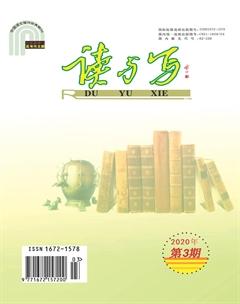Strategic Management in Global Changes
苗沺
Abstract With the acceleration of globalization, companies are now competing in a wider global environment, where rapid, volatile and discontinuous changes are happening. The wider global external environment is the source of megatrends and CEOs must be aware of them with the help of models and respond to the discontinuities properly in order to survive in the globalization.
Concept of “Rapid, Volatile, Discontinuous Change”
The business world now is quite different from what it used to be. The external environment is changing at a more frequent level, which is rapid. The change is inconsistent and it comes from everywhere, which is volatile. Most importantly, it is hard to predict the change, which is discontinuous. The contemporary environment is like turbulence. It is essential and of great importance to understand the strength of this turbulence. The rapid, volatile and discontinuous change contributes to the formation of the megatrends. Megatrends mainly happen in the global external environment and they are mostly driven by technology.
Models Used to Access the Role, Impacts and Implications of Discontinuity
Reflective and rational strategic management processes are required to analyze and evaluate the megatrends in the wide global external environment. There are two models that are typically used and they are the PESTLE Model and Porters Five Forces plus Government Model.
PESTLE Model is often used to analyze the political, economic, social, technological, legal and environmental factors in order to generate the megatrends in the general environment and help organizations to recognize the opportunities and threats that they might face. For example, the megatrend in economy is the outsourcing globally and the emergence of multinational enterprises. Companies that are engaged in the activities of outsourcing are trying to make themselves stronger by benefiting from the value-chain and generating more above-average returns. A new megatrend in technology field is 3D printing technology. It is full of creativity and relatively faster to manufacture and it can reduce development cost.
Porters Five Forces plus Government Model is used to systematically analyze the megaforces or the sources of opportunities and threats in an industry. The five forces are threat of new entrants, barging power of suppliers, barging power of buyers, threat of substitute products and rivalry among competing firms.The threat of new entrants is low when it is difficult to get access to distribution channel, which is the reason why Woolworths and Coles can be the leaders of retailing industries in Australia. Barging powers of suppliers will increase if suppliers are powerful firms and few in number, for instance, Boeing in airline industry. Customers barging power tends to increase if they can switch to another product without paying too much switching cost. For example, customers of Coles can easily switch to Woolworths without paying any cost. The threat of substitute product will increase if it has better quality or performance. For example, the popularity of digital cameras resulted in the failure of Kodak. Competitors rivalry usually increases if they are large in number and balanced, just like the competition among soft drink industry. The sixth force, which is the government, refers to the regulations within a specific industry, which will have an impact on the strategic choice of an organization. For example, the Australian Government restricted foreign investment of 49 per cent in total and 25 per cent for any one investing entity in Qantas.
How CEOs should Respond to Discontinuous Changes
As the strategic core of organizations, CEOs should be aware of the megatrends and megaforces that are occurring in both external environment and the specific industry that they are operating and they should respond to them properly so that they can survive. Firstly, by using PESTLE Model, managers can learn what is going on in the wide global external environment about the megatrends in politics, economy, legal, technology or environment. As long as they have got the idea of the megatrends that are happening around them, they will not be surprised when megatrends start to get involved with their industry. Secondly, the discontinuity requires CEOs to have strategic flexibility, which means that CEOs need to be creative and innovative. Analyzing the turbulence will help CEOs know where they are, which will enable them to adjust their strategic objectives and approaches. By being creative and innovative, CEOs can be the leader of the megatrends and megaforces, so that they can seize the opportunities and minimize the threats and finally they can stand out in the intense competition.
Conclusions and Recommendations
In conclusion, rapid, volatile, discontinuous change is the megatrend that is going on in the wide global external environment. This discontinuity means opportunities and threats for business and it requires CEOs to flexibly adjust their strategic approaches and objectives accordingly if they want to survive in the specific industry that they are operating.
It is recommended that CEOs must not resist the megatrends. Instead, they need to be aware of the megatrends and megaforces that are happening. With the help of those three models, CEOs will be capable of identifying the future opportunities which they should seize and realizing the threats that might bring them negative impact. As the discontinuity continues to occur, CEOs need to adjust their strategic objectives and approaches so that they will not be beaten in the age of discontinuity.
References
[1] Ahmad Raheelah, Zhu Nina Jiayue, Leather Andrew et al, Strengthening strategic management approaches to address antimicrobial resistance in global human health: a scoping review [J]. BMJ global health. 2019 (5).
[2] Constanza Bianchi, Santiago Mingo, Viviana Fernandez. Strategic management in Latin America: Challenges in a changing world [J]. Journal of Business Research.

